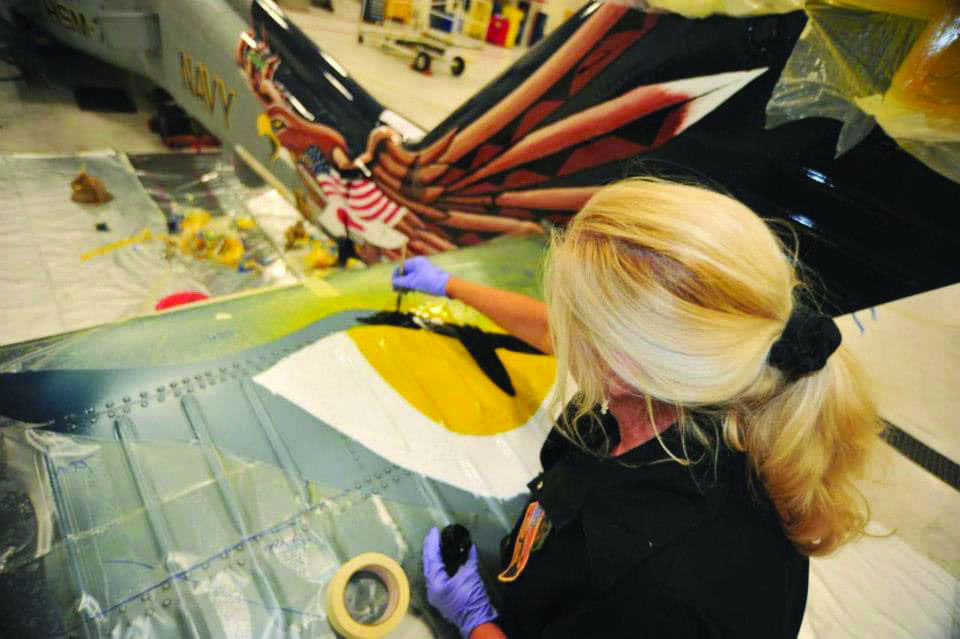
Plane to See: The Evolution of Marine Corps Aircraft Art and the Artist Keeping the Tradition Alive
By: Briesa KochPosted on April 15, 2024
As a tradition, aircraft art in the Armed Forces has been encouraged by some branches while being heavily regulated in others. And though there is currently a massive resurgence of interest in aircraft art, which has become more widespread within the Marine Corps and generally accepted over the years, that was not always the case. What was once a wartime tradition has now become a way for Marine aviators across the Corps to connect with their squadron’s history and their roots as Marines. One artist, through her experience in the Air Force, has dedicated her time to helping depict these histories, using military aircraft as the canvas and bringing new life to the practice of aircraft art as a form of expression.
Placing personalized decorative images on attack aircraft first gained traction among German forces in World War I after a sea monster was painted on the nose of an Italian Macchi M.5 flying boat in 1913. By this time, some squadrons had started to use general unit identification markings. The sea monster was meant to be menacing, a way to grab the attention of enemy pilots and stand out from others in the unit. Upon their return from missions, Allied pilots said they had seen German fighters painted in a multitude of colors soaring through the skies and took inspiration from the unique art. Soon after, Allied forces everywhere, including Marine pilots, began painting aircraft art of their own.
But aircraft nose art did not rise in popularity among U.S. forces until World War II, where it was primarily used as a method to boost morale during the war as it progressed, although it was not officially authorized. The United States Army Air Forces (USAAF) pilots had more freedom to personalize their aircraft and were even encouraged to do so by their command, while the strict regulations upheld by the Navy were put in place to ensure that no markings aside from squadron badges or national insignia were permitted on its airplanes. That regulation made it particularly difficult for Marines to participate in the popular practice, which is why there are more existing USAAF bombers with distinctive nose art displayed in museums than Marine ones.
“The Navy did not want the Japanese to be able to identify particular units and recognize when, for instance, a particular carrier was in the area or not in the area,” said Larry Burke, the aviation curator at the National Museum of the Marine Corps. “So, for much of the war, there is no readily visible individual identifier [on the aircraft] other than the Navy Bureau number. But those are small and generally not terribly visible once you get a few feet away from the airplane.” And though that regulation came long before World War II, the rules have been broken from time to time, particularly in the Pacific, where the crews rarely saw top brass. In other words, Marines did it anyway. Paintings of pinups were some of the most popular displays of nose art. But pilots would paint anything from animals to squadron mascots or even Disney characters on their attack aircraft, along with distinctive names for further personalization.
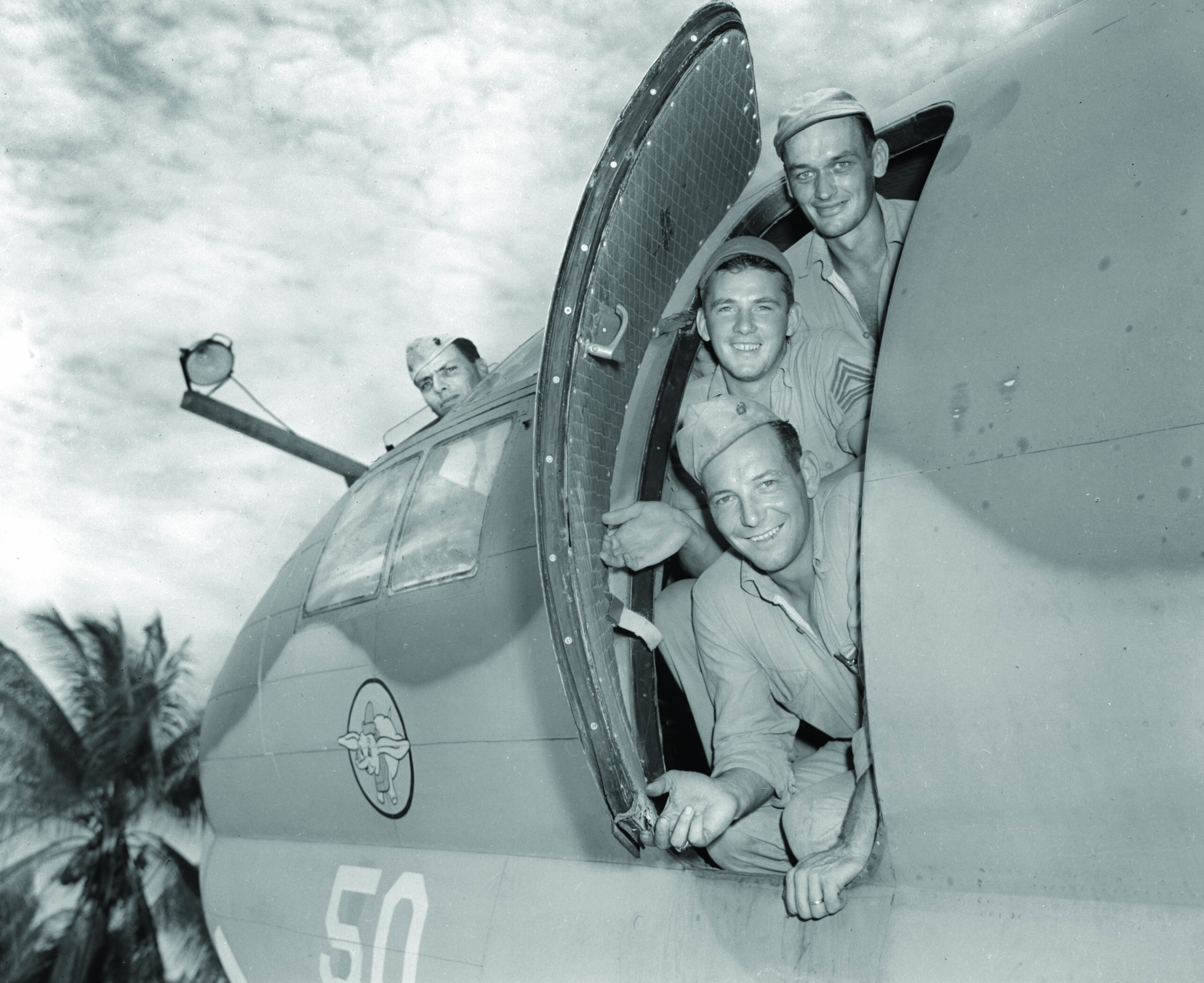
In fact, Walt Disney’s relationship to the military was largely personal. Not only did his older brother Roy O. Disney serve in the Navy during World War I, Walt Disney himself also served in the military as a Red Cross ambulance driver during the same war, where he decorated his ambulance and others in his unit with cartoons. Those ties had a big impact on the appearance of Disney cartoons on military aircraft, which started in 1933. Walt Disney Productions provided more than 1,200 insignias during World War II, creating designs of recognizable characters that would later be used for flight jacket patches, pins and nose art. These designs were done by the studio free of charge and provided to Allied military units as a donation to the war effort.
According to an article on Disney aircraft insignia in World War II published by the Department of Defense, Donald Duck was the most requested Disney character, with over 216 requests. But Pluto, Goofy, Mickey Mouse and Dumbo were other highly requested characters. Marine Utility Squadron 252 displayed their nose art painting of Disney’s Dumbo on the side of their Curtiss R5C Commando, calling it “The Flying Elephant.” Other squadrons, like Marine Utility Squadron 352 and Marine Scout Bombing Squadron 344, requested insignias that featured Donald Duck with the eagle, globe and anchor tattooed on his left wing, and a bulldog, bearing a similar resemblance to Disney’s Butch the Bulldog, holding a skull-decorated bomb in his paws.
The end of World War II marked the steady decline of aircraft art across all branches—mostly due to the end of wartime activity, but also due to the disappearance of the airplanes themselves. After the war, the United States dismantled what was left of the 300,000 warplanes or sold them off. Nose art would resurface during the Korean and Vietnam wars but was still more commonly seen on Air Force aircraft. However, that did not stop Marine aviators from taking part in the tradition, even though Navy restrictions on nose art never truly relaxed.
Aircraft art has continued to fluctuate in and out of use during the turn of the century. Peacetime regulations between wars dimmed the spark of tradition that was eager to grow and evolve, and many were unsure of how to continue the legacy of the aircraft artists before them. But hope was not lost. For over 20 years, one artist has dedicated her time to helping aviators across the Armed Forces carry on the legacy of those who came before them through the artistry she paints on the aircraft they fly. Her name is Shayne Meder, and she is a retired U.S. Air Force Master Sergeant who works under the alias “Flygirlpainter.”
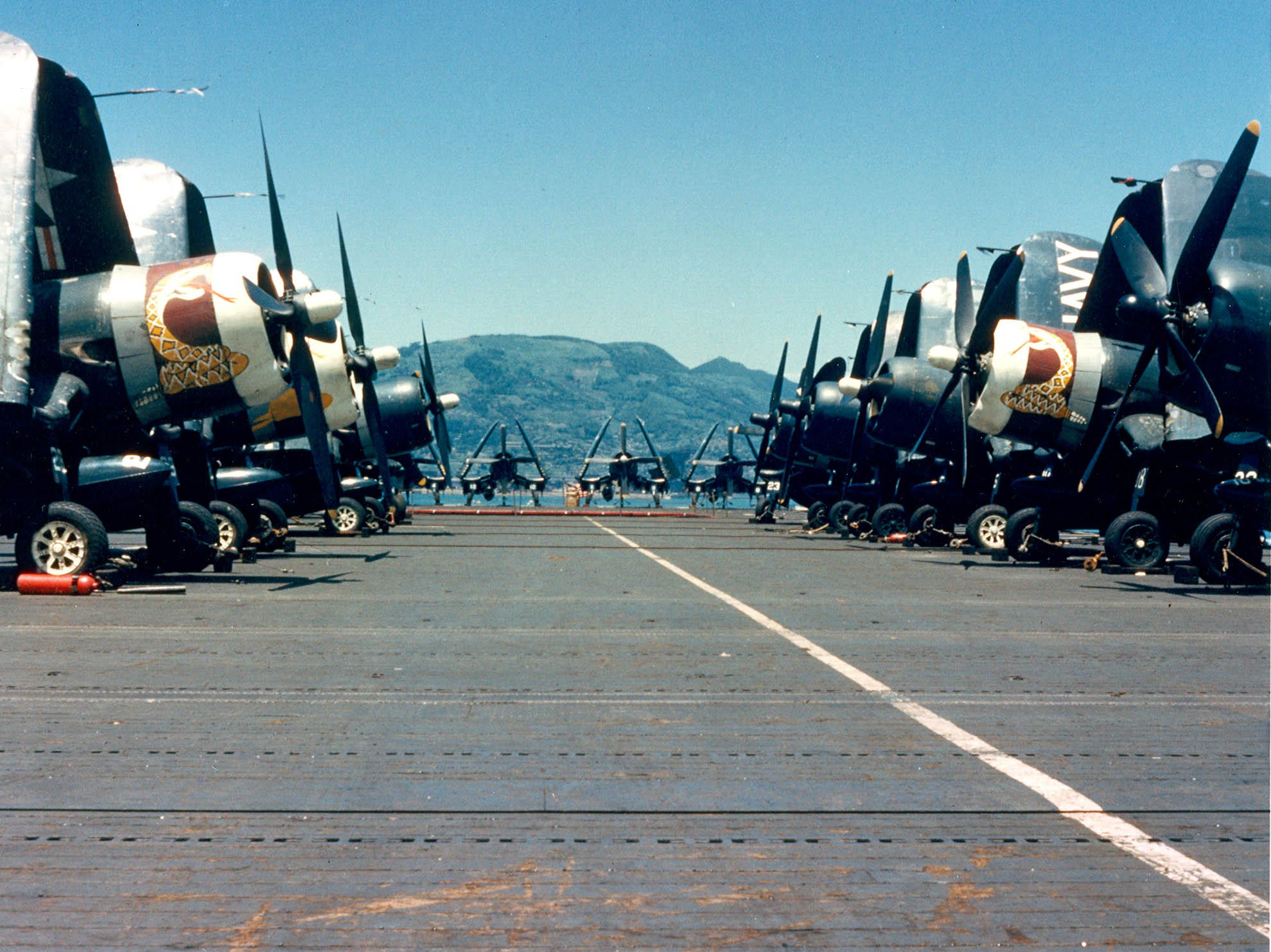
Alongside her work as a restoration manager at March Air Reserve Base in California, MSgt Meder has volunteered her services to help military flight crews express their pride and dedication in the form of art. For the Marine Corps, whose history details a strenuous fight to embrace aircraft art as a tradition amid strict uniformity, her services are welcomed and highly praised.
Meder’s work as an artist started long before she began painting aircraft art for military aviators. “My grandmother was a painter, so I was doing art before I even went into the Air Force,” she said. “I was in support equipment maintenance and did some aircraft maintenance inspection over the years.
Once they find out you can paint, you end up painting everything from designs on hangar doors to toolboxes.” In 1987, while working in Strategic Air Command, MSgt Meder began painting nose art on B-52 bombers before transferring to California in 1990. Shortly after, the base where Meder was stationed was put on a closure list, prompting her to retire. However, that did not stop her from working on aircraft. Years of experience in the Air Force brought along new opportunities, and shortly after retiring, she signed on as the Restoration Manager at March Air Reserve Base in California after it transitioned from military to private operations. Meder continued to work on and maintain old military aircraft like she had during her days in the Air Force, but it would not be until 1999 that she would begin her journey as Flygirlpainter.
While painting a piece of nose art on a B-17 at the March Airfield Museum, a Navy crew in the area stopped by on their way back from the San Bernadino Mountains. The previous year, there had been a crash, and the crew had traveled back to the crash site to pay tribute to their fellow Marines. One of the crewmembers saw the work that Meder was doing and asked her to paint the tail of an H-60 Seahawk for them. “They wanted this blue tail with a hawk and an eagle on it … I had never painted a helicopter like that before.” Though she was unsure at first, the crew persisted, and in 1999 they flew the helicopter from San Diego, Calif., to March Airfield Base, providing paint and other materials for her to create the design for their show bird. Meder got straight to work.
“I’d always been doing nose art on the base for the KC-135s. And I still do that, but it just steamrolled into this huge thing.” Since then, MSgt Meder has offered her services to any flight crew that has reached out, as long as travel expenses, room and board, and painting supplies are provided. Over the course of her years working as Flygirlpainter, Meder has painted over a dozen V-22B Ospreys for various aircraft squadrons across the Marine Corps, and the number of requests grows with each passing day. For Meder, her work is a way to give thanks to those who serve and have served, and to keep the tradition of aircraft art alive. “I know a lot of people support our military,” Meder said. “They might make cookies or send them care packages, and I love all that, but if I can make them happy and help them by painting them a bird, then that’s what I’ll do.” Her dedication and commitment have garnered her a large following of military aviators all over the country who seek out her services regularly.
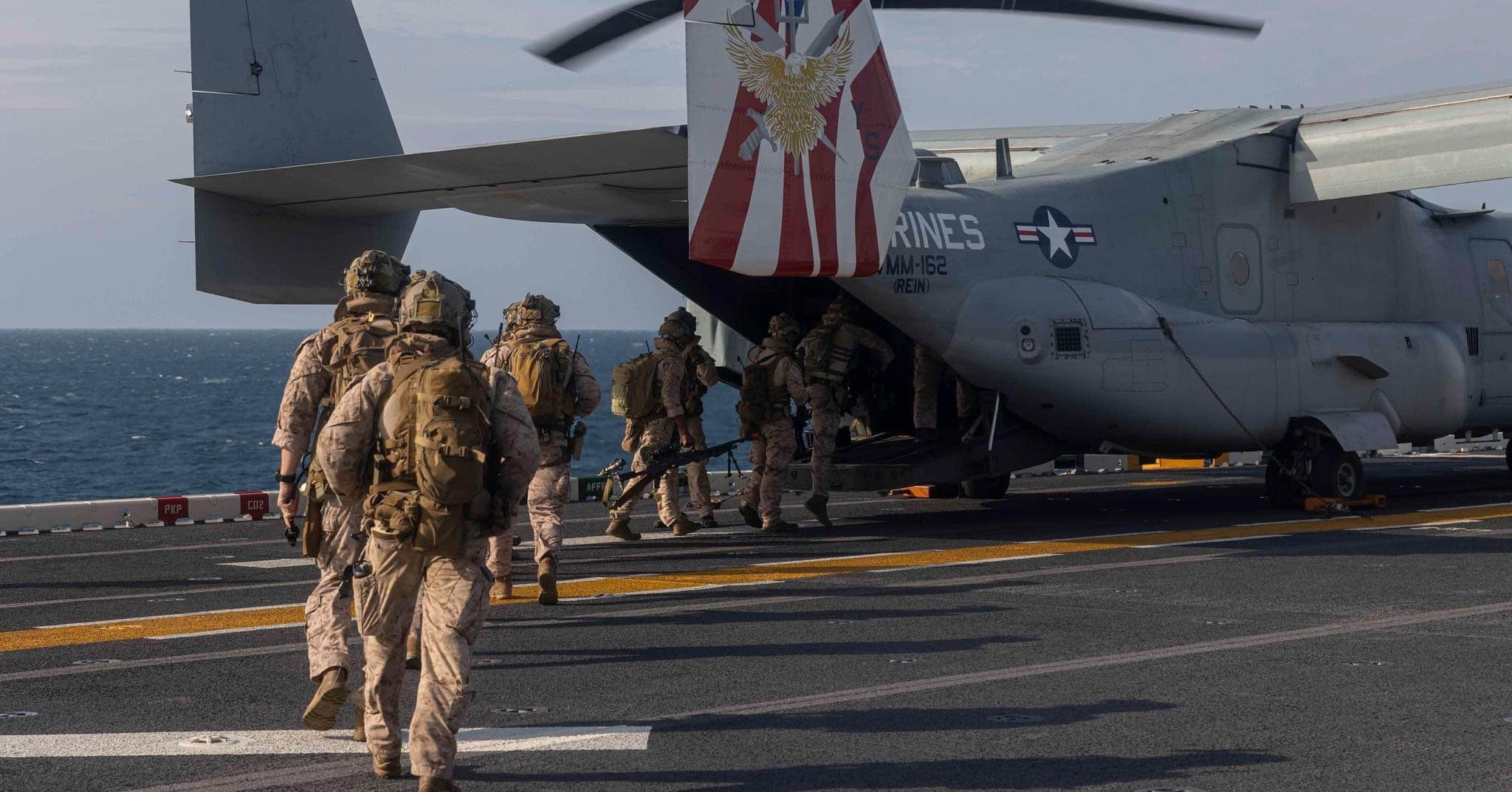
Marine Medium Tiltrotor Squadron (VMM) 764 “Moonlight,” VMM-364 “Purple Foxes,” VMM-268 “Red Dragons” and VMM-162 “Golden Eagles” are just a few of the Marine squadrons that have worked with Meder over her years as Flygirlpainter. The designs are striking and detailed, illustrating each squadron’s story in a colorful and creative way. Recently, VMM-268 and VMM-364 spoke with Leatherneck about the work that Meder has done for them and what each of their tail designs represent.
As support squadrons with the Marine Air Ground Task Force, VMM-268, located at Marine Corps Air Station Kaneohe Bay, Hawaii, and VMM-364, located at Marine Corps Base Camp Pendleton, Calif., provide assault support transport of combat troops as well as supplies and equipment during expeditionary, joint and combined operations. Their coastal locations, combined with the long-range capabilities of the MV-22B Osprey, allow the squadrons to conduct transpacific assault operations day or night, under all weather conditions.
“Our job is to insert Marines into key positions on the battlefield so that they can attack the enemies’ critical vulnerabilities. As they execute their role as the front-line war fighters, we ensure that they stay supplied with what they need to continue the fight. And when that fight is done, we bring them home,” said Captain Casey “Mouth” Funk, a pilot with VMM-268. Having always aspired to become a pilot, Funk enlisted in the Corps for the opportunity to fly but was also drawn to the Corps’ values and cultural environment. “It’s a community of service built around a requirement to constantly better oneself and help those around you do the same,” he said. While nose art united Marines of the past with their shared longing for home, today’s Marine aviators can find community through art that represents the squadrons’ past and its future.
In 2019, MSgt Meder traveled to Hawaii to paint the tail of an MV-22B Osprey for VMM-268. The design featured two starkly different images, one on each side of the tail. One side displayed the squadron mascot, Trixi the Red Dragon, which was inspired by the dragon Smaug from J.R.R. Tolkien’s book “The Hobbit.” The painting of Trixi also pays tribute to VMM-268’s legacy of night operations, which began in 1982 when then-Marine Medium Helicopter (HMM) Squadron 268 became the first Marine Corps squadron qualified to fly with night-vision goggles. The other side of the tail features an image of two surfers looking out over the ocean at the setting sun. That image is known as “Endless Summer,” based on surfers Robert “Wingnut” Weaver and Patrick O’Connell, who were documented in a 1994 film titled “Endless Summer II,” directed by Bruce Brown. During the film, the two surfers travel the world in search of the perfect wave. “This squadron has a passion for excellence, and every day we show up in search of the perfect flight,” Capt Funk said. “That image, and the spirit carried with it, have long been a part of the squadron.” Though completely different in appearance, both paintings show a different part of VMM-268’s history and the fundamental purpose of the artistic expression that aircraft art brings for military aviators.
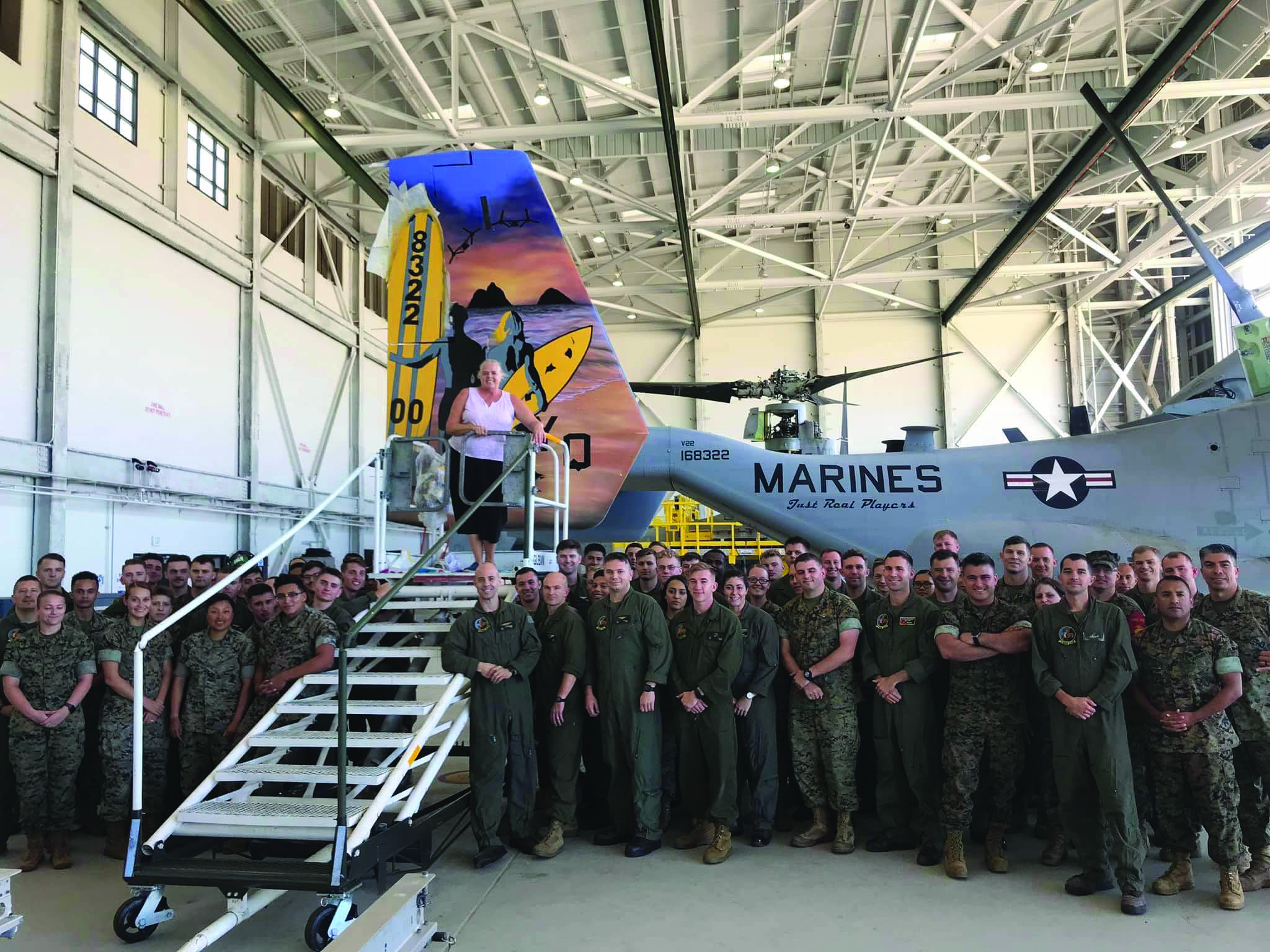
Nearly three years later, Meder would make her way to Camp Pendleton to paint a tail art design for VMM-364, the “Purple Foxes.” Once designated HMM-364, the squadron was awarded the Presidential Unit Citation for their service during the Vietnam War and became well known throughout the Corps for descending into landing zones to support ground troops while under fire. On Oct. 9, 2014, the squadron was redesignated. During the redesignation ceremony, all CH-46 Sea Knight helicopters were retired and have been replaced by the MV-22B Osprey.
“The Purple Foxes have a couple of historic stories that blend together to form where that [mascot] came from,” said Lieutenant Colonel John C. Miller, the commanding officer of VMM-364. “HMM-364 was formed in the early ’60s, and the squadron members would visit a bar called the Purple Fox. So that was where the original name came from. They liked this bar, and they would visit on R&R. As they started deploying to Vietnam in combat operations during the war, they acquired a fox pelt that was dyed purple, and that supported the purple fox name that they acquired through the bar.”
Their design features the face of a fierce purple fox ripping through metal with sharpened claws on both sides of the tail. “The purple fox on the aircraft is the traditional patch that we wear around. It’s a more aggressive, I would say, warfighting logo, and it takes up the whole tail of the aircraft,” LtCol Miller said. As with most squadrons who have had aircraft painted by Flygirlpainter, VMM-364 first discovered her work through her social media, where Meder showcases her work and the service she offers for military aviators. In all, it took a week and a half for Meder to complete the painting, but with the help and hospitality of the Marines of VMM-364, the process went smoothly, and the final product pays homage to the squadron’s history and the legacy that they carry with them.
But it isn’t just the artwork itself that differs from the wartime art of the past. As aircraft art continues to resurface within the Marine Corps, aviators who fly a variety of aircraft have the desire to take part in the tradition. This leads to the invention of new ways to express pride and dedication to the Corps without the perception that aircraft art is reserved only for attack aircraft. “The tail is a great canvas for us to show our squadron art. It is easy to see even from a distance,” said Funk, when asked about the importance of featuring art on the tail of an aircraft. “The art on the nose was always meant to look menacing … the art on the tail for assault support aircraft is a signal of hope to the troops on the ground that the Red Dragons are here, and we will not stop flying as long as they need us.”
The significance of what Marine aviators do and how they support their Corps is something that Flygirlpainter has been able to depict on the aircraft they fly. Her artwork signifies that there are no limitations to art, whether it’s on an easel or an aircraft. “For an aviation unit, artwork is everything to a squadron. It represents the culture, and each individual squadron that is dedicated to the mission that they have,” LtCol Miller said. Flygirlpainter embodies this mentality in her work. By revisiting this old tradition, Marines have the opportunity to express their love for the Corps, to celebrate those who passed their legacies on, and to take pride in the hard work, the long hours and the sacrifice that it takes to serve as a Marine.
Executive Editor’s note: You can see more of MSgt Meder’s incredible work on Instagram and Facebook under the name @Flygirlpainter, or on her website: www.flygirlpainters.com
Author’s bio: Briesa Koch is the editorial assistant for Leatherneck and a graduate student at Old Dominion University where she is earning a master’s degree in library and information science.




